
Ideal Growing Conditions for Succulent Plants: Full Sun or Shade?
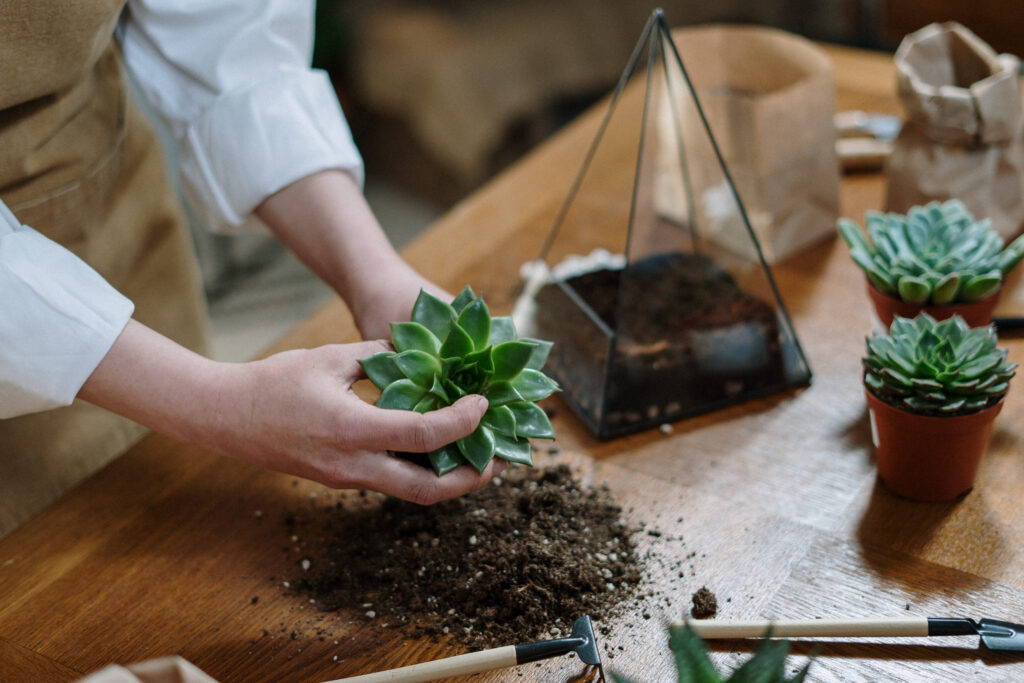
Succulent plants have gained immense popularity in recent years due to their unique appearance and low maintenance requirements. These plants are known for their thick, fleshy leaves and stems that store water, allowing them to thrive in arid environments. However, when it comes to providing the ideal growing conditions for succulents, there is often confusion about whether they should be placed in full sun or shade. Understanding the needs of these plants is crucial to ensure their health and longevity.
We will explore the ideal growing conditions for succulent plants, specifically focusing on the debate between full sun and shade. We will discuss the natural habitat of succulents and how it influences their light requirements. Additionally, we will provide guidelines on how to determine the best location for your succulent plants based on factors such as climate, season, and species. By the end of this article, you will have a clear understanding of whether your succulents should be placed in full sun or shade to promote their growth and well-being.
- Succulent plants thrive in full sun
- Succulents can also tolerate partial shade
- The ideal growing conditions for succulents include at least 6 hours of sunlight per day
- If grown in shade, succulents may stretch or become leggy
- Full sun exposure helps succulents maintain their compact and vibrant form
- However, in extremely hot climates, some succulents may benefit from partial shade to prevent sunburn
- It is important to monitor the sunlight levels and adjust accordingly for optimal growth
- Succulents are adaptable and can survive in a variety of lighting conditions, but they generally prefer bright, indirect light
- Frequently Asked Questions
Succulent plants thrive in full sun
Succulent plants are known for their ability to thrive in harsh environments, making them a popular choice among gardeners. One of the key factors in successfully growing succulents is providing them with the ideal amount of sunlight. Generally, succulent plants prefer full sun exposure, which means they need at least 6 hours of direct sunlight each day.
Full sun exposure allows succulents to photosynthesize efficiently, promoting healthy growth and vibrant colors. When succulents receive adequate sunlight, they are able to produce the energy they need to store water in their leaves, stems, and roots. This water storage is what enables succulents to survive in arid conditions and go long periods without being watered.
It's important to note that not all succulents have the same sun requirements. Some varieties, such as Echeveria and Sedum, can tolerate full sun without any issues. These types of succulents have adapted to thrive in hot and dry environments, and direct sunlight actually enhances their colors and shapes.
However, there are also succulent species that are more sensitive to intense sunlight. These varieties, such as Haworthia and certain types of Aloe, prefer some shade or filtered sunlight. Too much direct sunlight can cause their leaves to burn or turn yellow, so it's crucial to find the right balance for these types of succulents.
 Succulents and Frost: Unveiling Their Cold Hardy Traits
Succulents and Frost: Unveiling Their Cold Hardy TraitsIf you're unsure about the sunlight requirements of a specific succulent, it's always a good idea to do some research or consult a gardening expert. They can provide guidance on the optimal growing conditions for your succulent and help you determine whether it should be placed in full sun or partial shade.
While succulent plants generally thrive in full sun, it's important to consider the specific needs of each succulent species. Understanding their sunlight requirements will help you provide the ideal growing conditions for your succulents, ensuring their health and longevity.
Succulents can also tolerate partial shade
While succulents are often associated with full sun exposure, they can also tolerate partial shade. In fact, some succulent species actually prefer a bit of shade to protect them from intense sunlight.
When it comes to determining the ideal growing conditions for your succulent plants, it's important to consider their natural habitat. Succulents are native to arid regions where they have adapted to thrive in harsh conditions with limited water and intense sunlight.
While full sun exposure can be beneficial for many succulent varieties, providing them with some shade can help prevent sunburn and heat stress, especially in hotter climates. Partial shade can also be advantageous for certain succulent species that are more sensitive to direct sunlight.
Factors to consider when providing partial shade for succulents:
- Light intensity: When choosing a spot for your succulents, consider the intensity of the sunlight. Partial shade can be achieved by placing your plants in an area that receives filtered sunlight or by providing them with some shade during the hottest parts of the day.
- Duration of shade: It's important to strike a balance between providing enough shade to protect your succulents without depriving them of sunlight altogether. Succulents still need some light to carry out photosynthesis and maintain their vibrant colors.
- Temperature: Shade can help regulate the temperature around your succulents, preventing them from overheating. This is particularly important in regions with high temperatures or during heatwaves.
It's worth noting that not all succulent species have the same shade tolerance. Some varieties, like Sedum and Haworthia, are better suited for partial shade, while others, such as Echeveria and Agave, thrive in full sun. It's always a good idea to research the specific needs of your succulent plants to ensure they receive the optimal growing conditions.
 The Limit of Succulent Plant Growth: How Large Can They Grow?
The Limit of Succulent Plant Growth: How Large Can They Grow?While succulents are known for their ability to withstand full sun exposure, providing them with partial shade can be beneficial in certain circumstances. By considering factors such as light intensity, duration of shade, and temperature, you can create the ideal growing conditions for your succulent plants and help them thrive.
The ideal growing conditions for succulents include at least 6 hours of sunlight per day
When it comes to succulent plants, providing them with the ideal growing conditions is essential for their health and vitality. One of the most debated topics among succulent enthusiasts is whether these plants thrive better in full sun or shade. While both options have their own advantages, it's important to understand the specific needs of your succulents to ensure their optimal growth.
Full Sun: A Sun Lover's Paradise
Succulents, by nature, are adapted to arid and sunny environments. Therefore, many succulent varieties prefer full sun conditions. This means they require at least 6 hours of direct sunlight per day to flourish. When placed in a location with ample sunlight, succulents tend to develop vibrant colors and compact, sturdy growth patterns.
Full sun exposure provides succulents with the necessary energy to undergo photosynthesis efficiently. This process allows them to convert sunlight into energy, which they store in their fleshy leaves and stems. Additionally, the sunlight helps to dry out the soil quickly, preventing the roots from sitting in moisture for too long, which can lead to root rot.
However, it's worth noting that not all succulents can tolerate intense, direct sunlight for extended periods. Some species, particularly those with softer leaves or lighter-colored foliage, may be prone to sunburn or leaf damage. In such cases, providing partial shade during the hottest part of the day can help protect these more sensitive succulents from excessive sunlight.
Shade: A Refuge for Delicate Succulents
While many succulents thrive in full sun, there are also succulent varieties that prefer shade or partial shade. These succulents are often native to regions with lower light levels or have adapted to grow under the protection of larger plants or trees. Shade-loving succulents typically have thinner leaves and a more elongated growth habit.
Placing shade-loving succulents in areas with indirect or filtered sunlight can prevent them from getting scorched by the intense rays of the sun. This can be achieved by providing them with a canopy of taller plants, placing them in windowsills with sheer curtains, or positioning them in areas with dappled light.
 Do Succulents Need Sunlight in Winter?
Do Succulents Need Sunlight in Winter?It's important to note that even shade-loving succulents still require some sunlight to thrive. Completely depriving them of sunlight can result in weak growth and leggy, stretched-out stems. Therefore, it's crucial to find the right balance between shade and light exposure for these particular succulent varieties.
Ultimately, the ideal growing conditions for succulents depend on the specific needs of each plant. While many succulents thrive in full sun and require at least 6 hours of direct sunlight per day, there are also shade-loving succulents that prefer lower light levels. Understanding the characteristics and preferences of your succulents will help you determine whether to provide them with full sun or shade. Remember to monitor your plants closely and make adjustments as needed to ensure their optimal growth and overall well-being.
If grown in shade, succulents may stretch or become leggy
Succulent plants are known for their ability to thrive in dry and arid conditions, making them a popular choice for both indoor and outdoor gardens. However, when it comes to their ideal growing conditions, the debate between full sun and shade often arises.
While some succulent varieties can tolerate partial shade, it is generally recommended to provide them with ample sunlight to ensure their optimal growth and form. When succulents are grown in shade, they may stretch or become leggy in their search for more light.
When succulents stretch, it means that they start to elongate their stems in an attempt to reach towards the nearest light source. This can result in a less compact and aesthetically pleasing appearance. Additionally, stretched succulents may become weak and more prone to breaking or toppling over.
On the other hand, when succulents are grown in full sun, they tend to maintain a more compact and robust form. The intense sunlight stimulates their natural growth habits, encouraging tighter rosettes and more vibrant colors.
However, it is important to note that not all succulent species have the same sun requirements. Some succulents, particularly those with lighter or variegated foliage, may be more sensitive to direct sunlight and can develop sunburn or leaf damage if exposed to intense rays for extended periods.
 The Effects of Direct Sunlight on Succulents: What You Need to Know
The Effects of Direct Sunlight on Succulents: What You Need to KnowTo strike a balance between providing enough sunlight and preventing sun damage, it is recommended to gradually acclimate your succulents to brighter conditions. Start by placing them in a location with partial shade and gradually expose them to more sunlight over a period of a few weeks. This will allow them to adapt and develop a tolerance for increased light exposure.
While some succulents can tolerate partial shade, growing them in full sun generally promotes healthier and more visually appealing plants. However, it is essential to consider the specific requirements of each succulent species and provide them with the right amount of light to avoid any potential damage.
Full sun exposure helps succulents maintain their compact and vibrant form
When it comes to growing succulent plants, one of the key factors to consider is the amount of sun exposure they receive. Succulents are known for their ability to thrive in arid conditions, and they have adapted various strategies to survive in harsh environments. One of these strategies is their ability to tolerate full sun exposure.
Full sun exposure is ideal for succulent plants as it helps them maintain their compact and vibrant form. When succulents receive ample sunlight, they produce more pigments, resulting in richer and more intense colors. Their leaves become more compact and tightly packed, giving them a more visually appealing appearance.
Furthermore, full sun exposure promotes healthier growth in succulent plants. The sunlight helps stimulate photosynthesis, the process by which plants convert sunlight into energy. This energy is then used to fuel the succulent's growth and development. With enough sunlight, succulents can grow more robustly and produce new leaves, stems, or even flowers.
However, it's important to note that not all succulents can tolerate full sun exposure. Some varieties may be more sensitive and prefer some shade to protect them from excessive heat or intense sunlight. In such cases, it's crucial to understand the specific needs of the succulent species you are growing.
 Unveiling the Secrets of Succulents' Resilience in the Harsh Desert
Unveiling the Secrets of Succulents' Resilience in the Harsh DesertFactors to consider when deciding on sun exposure for succulents
Before deciding whether to provide full sun or shade for your succulent plants, consider the following factors:
- Succulent species: Different succulent species have varying sunlight requirements. While some thrive in full sun, others prefer partial shade. Research the specific needs of your succulent species to ensure you provide the ideal conditions for their growth.
- Climate: The climate of your region plays a significant role in determining the sun exposure needs of your succulents. Succulents native to desert regions typically require full sun exposure, while those from shady forest environments may prefer partial shade.
- Intensity of sunlight: Consider the intensity of sunlight in your location. If you live in an area with scorching summers and intense sunlight, providing some shade for your succulents during the hottest part of the day might be beneficial.
- Container or outdoor planting: The type of planting method you choose can also influence the sun exposure your succulents receive. Container plants can be moved or placed in areas with the desired amount of sun, while outdoor plants may have to adapt to the available sunlight conditions.
While succulents generally thrive in full sun exposure, it's essential to consider the specific needs of the species you are growing. Understanding their preferences and adapting the sun exposure accordingly will help you create the ideal growing conditions for your succulent plants.
However, in extremely hot climates, some succulents may benefit from partial shade to prevent sunburn
While succulents are known for their ability to thrive in full sun, there are certain situations where providing them with partial shade can be beneficial. In extremely hot climates, the intense and prolonged exposure to direct sunlight can lead to sunburn on the leaves of succulent plants. This can cause the leaves to become discolored, develop brown spots, or even shrivel up and die.
To prevent sunburn and maintain the health of your succulents, it is important to consider providing them with some shade during the hottest parts of the day. This can be achieved by placing them under a patio or awning where they can still receive some filtered sunlight. Alternatively, you can use shade cloth or sheer curtains to create a dappled light effect.
It's important to note that not all succulents require shade, and it largely depends on the specific species and their natural habitat. Some succulents are better adapted to intense sunlight and can withstand higher temperatures without any issues. These varieties typically have thicker leaves or a waxy coating that helps them retain moisture and protect against sun damage.
If you're unsure whether your succulents need shade, observe their behavior and appearance. Signs of sunburn include changes in leaf color, wilting, or a generally unhealthy appearance. If you notice any of these signs, it's a good idea to move your succulents to a location with partial shade and monitor their progress.
 Managing Sun Stress: How Succulents Cope with Excessive Sun Exposure
Managing Sun Stress: How Succulents Cope with Excessive Sun ExposureFurthermore, keep in mind that even succulents that are adapted to full sun can still benefit from some shade during the hottest part of the day. Providing them with a break from direct sunlight can help prevent excessive heat stress and minimize the risk of sunburn.
Ultimately, finding the ideal growing conditions for your succulents requires careful observation and adjustment. While most succulents thrive in full sun, it's important to be mindful of the specific needs of your plants and make adjustments accordingly. By providing the right amount of shade when necessary, you can ensure that your succulents remain healthy and vibrant in even the hottest climates.
It is important to monitor the sunlight levels and adjust accordingly for optimal growth
When it comes to growing succulent plants, understanding their sunlight requirements is crucial for their overall health and growth. The amount of sunlight a succulent receives can significantly impact its growth rate, coloration, and overall appearance. However, determining whether succulents thrive in full sun or shade can be a bit tricky, as different species have varying preferences.
Understanding the sunlight needs of succulent plants
Succulents are known for their ability to store water in their leaves and stems, allowing them to survive in arid environments. In their natural habitat, succulents are often exposed to intense sunlight and high temperatures. However, this doesn't mean that all succulents require full sun to thrive.
Some succulents, such as Echeverias and Sedums, prefer bright, direct sunlight for at least six hours a day. These succulents usually have thick, fleshy leaves that can tolerate the intense heat and light. Placing them in full sun can enhance their vibrant colors and compact growth.
On the other hand, there are succulents that prefer partial shade or filtered light. These include Haworthias, Gasterias, and some types of Aloe. These succulents are native to regions with more shade or indirect sunlight, such as under the canopy of larger plants or trees. Exposing these succulents to direct sunlight for prolonged periods can lead to sunburn and damage their leaves.
Providing the ideal growing conditions
In order to provide the ideal growing conditions for your succulents, it is important to monitor the amount of sunlight they receive and adjust accordingly:
 Can Succulents Thrive in Outdoor Summer Conditions?
Can Succulents Thrive in Outdoor Summer Conditions?- Full sun: If your succulent prefers full sun, make sure to place it in a location where it will receive at least six hours of direct sunlight per day. This can be a sunny windowsill, a bright patio, or a spot in your garden that gets ample sunlight.
- Partial shade: For succulents that prefer partial shade, it is best to provide them with filtered light or indirect sunlight. You can achieve this by placing them near a window with a sheer curtain or by positioning them under the canopy of taller plants or trees.
It is important to note that even succulents that thrive in full sun can still benefit from some shade during the hottest part of the day, especially in regions with scorching summers. Providing a bit of afternoon shade can prevent sunburn and excessive heat stress.
Observing your succulents
Remember, every succulent is unique, and its sunlight requirements may vary. It is essential to observe your succulents closely and look for signs of stress, such as wilting, discoloration, or etiolation (stretching towards the light). These signs can indicate that your succulent is not receiving the right amount of sunlight.
By understanding the sunlight needs of your succulents and providing them with the ideal growing conditions, you can ensure their health, vibrant colors, and overall beauty. Whether they thrive in full sun or shade, your succulents will reward you with their resilience and stunning appearance.
Succulents are adaptable and can survive in a variety of lighting conditions, but they generally prefer bright, indirect light
When it comes to growing succulent plants, finding the ideal lighting conditions is crucial for their overall health and growth. While succulents are known for their ability to adapt to different environments, they generally thrive in bright, indirect light.
While some succulents can tolerate full sun, it's important to note that prolonged exposure to intense sunlight can lead to sunburn or scorching of the leaves. To prevent this, it's best to provide them with some shade during the hottest parts of the day, especially in regions with extremely high temperatures.
On the other hand, keeping succulents in complete shade can hinder their growth and cause them to become leggy or stretched out. Without sufficient light, they may struggle to photosynthesize and may not produce vibrant colors or firm, compact leaves.
 Succulent Flowering Times: When Do They Bloom?
Succulent Flowering Times: When Do They Bloom?So, what are the ideal growing conditions for succulents?
For most succulent plants, a balance between full sun and shade is recommended. Here are some guidelines to help you provide the best growing conditions:
- Bright, indirect light: Place your succulents in a location where they can receive bright, indirect light for at least a few hours each day. This can be near a window with filtered sunlight or outdoors in a spot that gets partial shade.
- Avoid intense midday sun: If you live in an area with strong sun, make sure to protect your succulents from direct sunlight during the hottest part of the day. Consider using shade cloth or placing them in a location that receives dappled sunlight.
- Rotate your succulents: To ensure even growth, rotate your succulents every few weeks. This will prevent them from leaning towards the light source and encourage symmetrical growth.
- Observe your succulents: Pay attention to how your succulents respond to the light they are receiving. If you notice signs of sunburn or stretching, adjust their positioning to provide more shade or light accordingly.
Remember, each succulent species may have slightly different lighting requirements, so it's essential to research the specific needs of the succulents you are growing. By providing the ideal lighting conditions, your succulents will thrive and display their unique beauty.
Frequently Asked Questions
1. Do succulent plants prefer full sun or shade?
Succulent plants generally prefer full sun, as it allows them to thrive and maintain their vibrant colors.
2. Can succulents tolerate shade?
While succulents can tolerate some shade, they may become leggy and lose their compact shape. It is best to provide them with at least a few hours of direct sunlight each day.
3. What happens if succulents are exposed to too much sun?
If succulents are exposed to excessive sunlight, they may develop sunburn or sun damage. This can manifest as discoloration, bleaching, or even scarring on the leaves.
4. How can I determine the right amount of sunlight for my succulents?
Observing the color and growth of your succulents can help you determine if they are getting the right amount of sunlight. If they are growing compactly and have vibrant colors, they are likely receiving adequate sun exposure.
 Unlocking the Secrets: Expert Tips for Growing Large Succulents
Unlocking the Secrets: Expert Tips for Growing Large SucculentsIf you want to read more articles similar to Ideal Growing Conditions for Succulent Plants: Full Sun or Shade?, you can visit the Growing Conditions category.

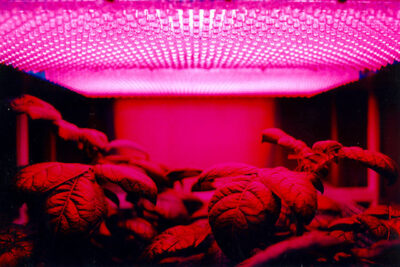
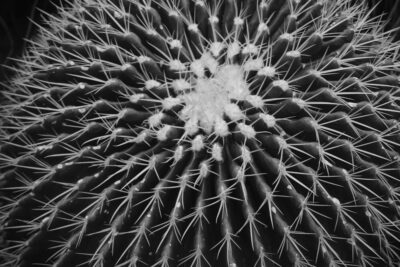
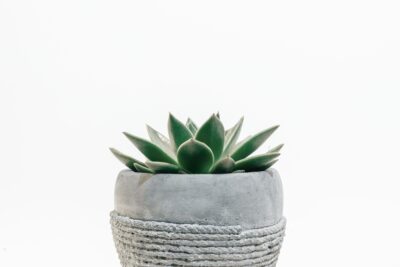
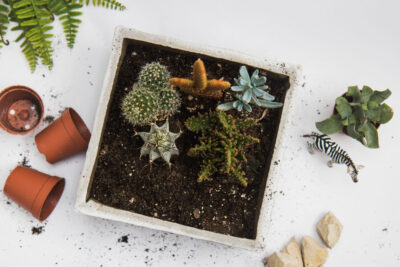

You Must Read